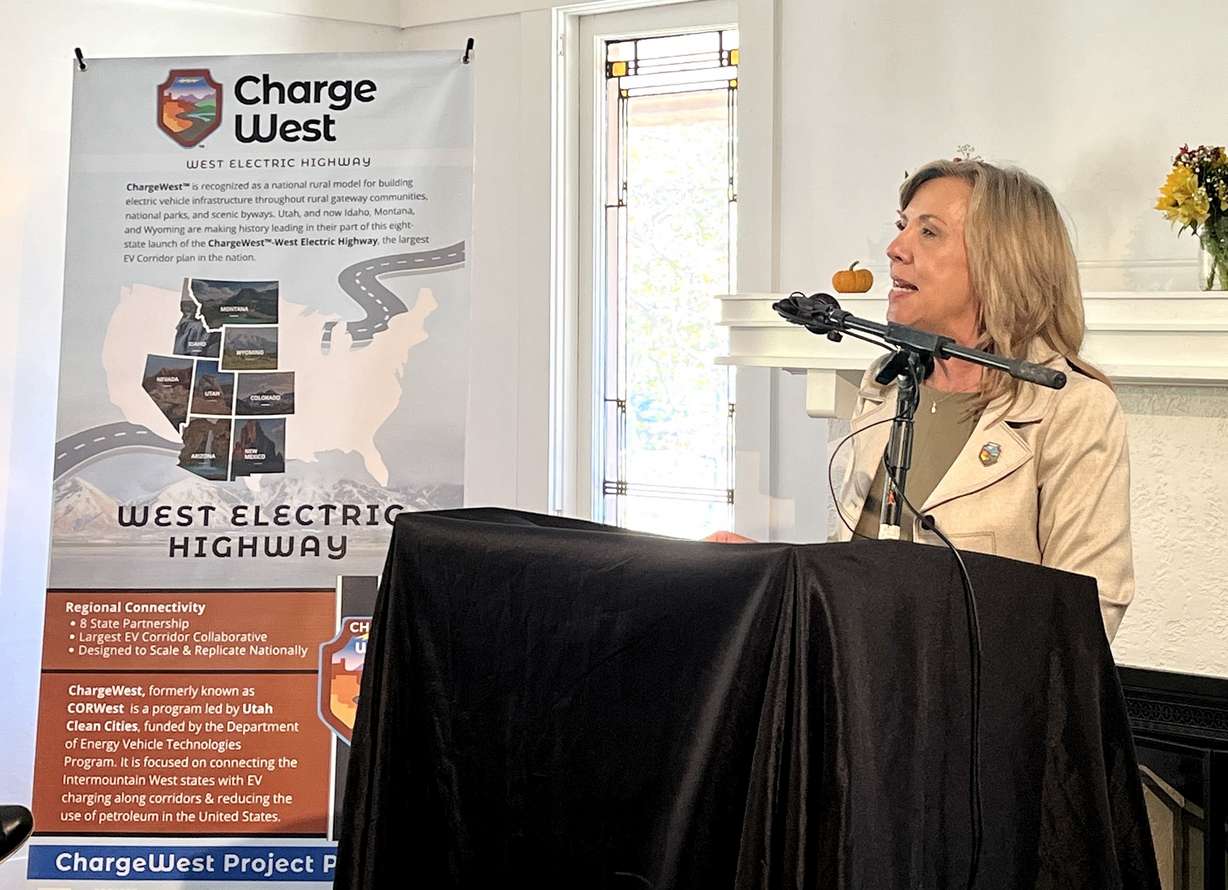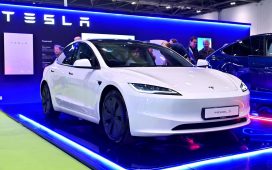SALT LAKE CITY — Utah has already turned I-15 into a vital corridor for electric vehicles, but it’s now ready to take the next step to expand charging stations across rural routes in coordination with seven other Intermountain West states.
Utah Clean Cities announced that “Charge West,” a project aiming to add stretches of electric vehicle charging stations across rural highways across the Beehive State, as well as Arizona, Colorado, Idaho, Montana, Nevada, New Mexico and Wyoming, is now underway.
The project received a $1.5 million contract from the Department of Energy’s Vehicle Technologies Office program, allowing for more advanced planning. It’s considered the biggest step since the eight states signed a memorandum of understanding in 2017, creating the backbone for the project.
“The project aims to significantly reduce carbon emissions along our heavily traveled routes while enhancing access to scenic byways and our national parks,” said Tammie Bostick, director of Utah Clean Cities and lead of the Charge West project, during an event to launch the program Thursday afternoon. “(It) will revolutionize electric transportation in the West.”
Utah’s EV growth
Electric vehicle use remains on the rise in Utah. There were nearly 40,000 electric vehicles registered in the state by the end of last year, up nearly 400% from 2020, per state and federal data. Bostick believes this shows that the market is driving the demand for a charging grid beyond urban hubs where it is easier to find charging stations.
This is why the state built an electric vehicle grid along I-15, where there are electric vehicle charging stations about every 50 miles. By next year, that will be the case through all of Utah’s interstates and other key highways, according to Lyle McMillan, director of strategic investments for the Utah Department of Transportation.
Most of these are 600-kilowatt “fast DC” charging stations, capable of recharging an electric vehicle in 15 to 25 minutes. Each costs about $1 million to build because there’s a “big powerful machine” to generate all that power, McMillan explained to KSL.com.
The Infrastructure Investment and Jobs Act — also referred to as the Bipartisan Infrastructure Law — passed in 2021 and made it easier for these projects to happen, he adds.
Among other things, the law set aside annual apportionments to pay for these types of projects. Through this, Utah has received $29 million to spend on new charging stations. It also created a program to better fund electric vehicle stations by providing up to an 80% cost reimbursement for new stations.
What UDOT decided to do was pass this benefit on to private businesses, as long as they pay for at least 20% of any given project, build the station, and then own it and operate it for at least five years. Those willing to pay more than 20% of the cost were most likely to be selected.
This yielded interest from several businesses, including Rocky Mountain Power, Maverik and Utah.energy. Rocky Mountain Power even agreed to take on about 90% of the recent Moab station cost.
“The average is about 60% of the funding that is private,” McMillan said. “That is awesome and the way it should be.”
A regional grid
Not all of the Charge West stations will be as powerful as the I-15 stations, though. That means it will take longer for drivers to recharge their vehicles, but each project is cheaper, and more stations can be built faster. It can take several hours to recharge, but the average project cost is about a tenth of the fast-charging stations.
Those behind the Charge West program envision putting these types of stations near rural communities as an economic incentive, so people who are traveling through spend more time in the community or scenic area. It also offers rural residents an opportunity to switch to electric if they choose, especially as more manufacturers turn to EVs.

On top of that, it could offer an energy source in case of an emergency. As freight vehicles also start to become electric, the stations can also serve them as they travel goods across America.
Charge West would also offer other alternative fuels, such as hydrogen. Bostick contends all the options wouldn’t just clean up air quality but also reduce the country’s reliance on foreign oil to power up vehicles.
“This initiative to build out electric charging in rural areas, rural gateway communities along our scenic byways (and) along the road less traveled is really unique,” she told KSL.com after Thursday’s announcement. “We can modernize these under-resourced, underfunded communities that are often at the end of the line to get opportunities to have these innovations.”
McMillan said there are already monthly meetings with neighboring states over the program, but those will begin to focus more on where to strategically place these stations. It may take another few years to see the grid come together.
However, federal officials believe Charge West could ultimately set a standard for the rest of the country. As Hannah Hathcock, Clean Cities and Communities Northwest Regional Manager for the U.S. Department of Energy, put it, Charge West could become a “reputable model” for transportation and decarbonization models nationwide.







